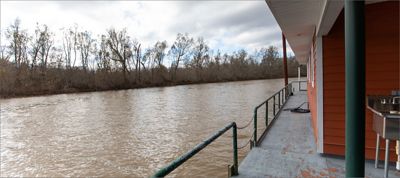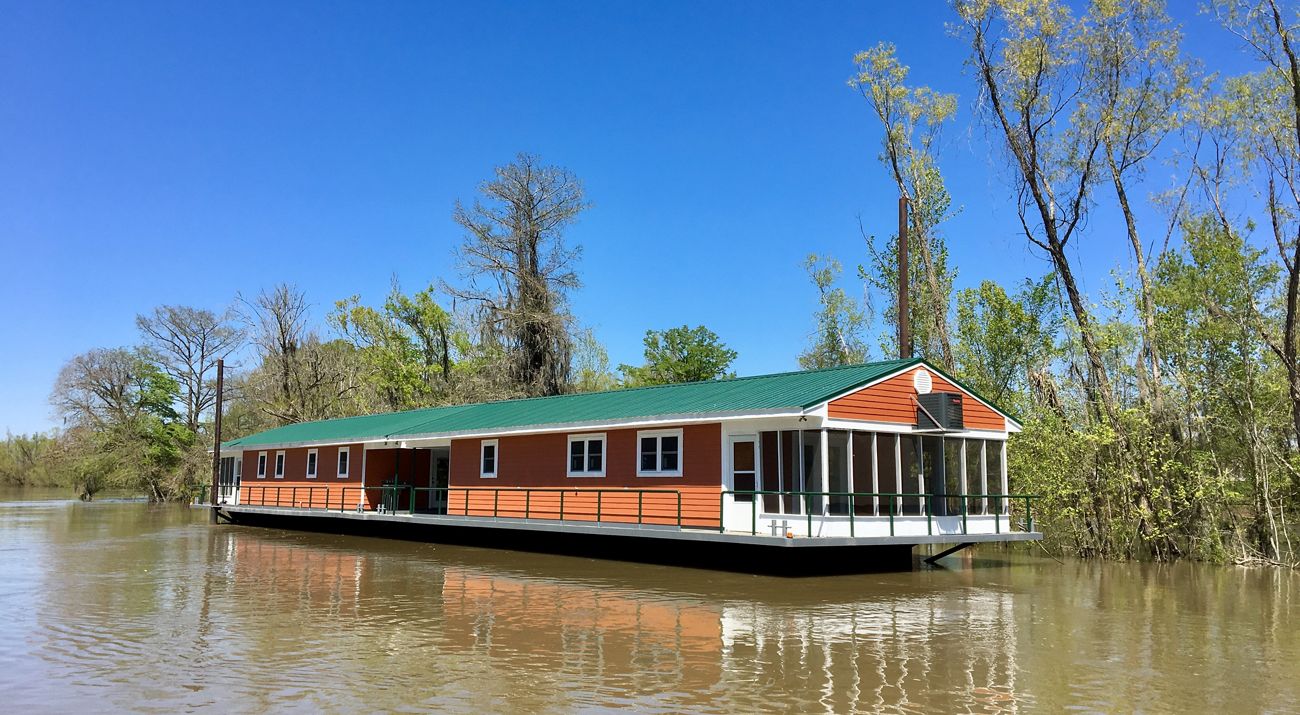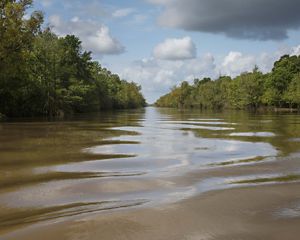Floating into the Future
The Atchafalaya Conservation Center brings our mission to lands, waters and wildlife we are working to protect.
Sitting atop floating barges on the Little Tensas Bayou, the Atchafalaya Conservation Center (ACC) is a key part of our Atchafalaya River Basin Initiative. With direct access to our work on the ground, the ACC helps us expand our floodplain restoration goals from 5,000 acres to potentially 100,000 acres protected.
Specifically, the two 800-square-foot buildings comprising the ACC include a meeting barge and a sleeping barge. As an extension of TNC’s work in the Atchafalaya River Basin, the ACC offers more opportunities to engage with landowners, local stakeholders and the plants, animals and critical habitats we are working to protect.
Bringing People Together
The ACC serves as an anchor for community-based conservation, stewardship, restoration and research in the region. By informing the community about TNC’s goals and efforts, we bring awareness and positive change to the Atchafalaya community.
Now, up and running, it welcomes an assortment of visitors—from researchers and scientists to students and fishermen—to collaborate and learn more about TNC’s restoration, monitoring and stewardship efforts. Both barges are equipped to allow access to water, electricity and Internet so that a wide variety of work can be done on board.
The ACC also serves an educational purpose: it provides graduate students who are part of TNC’s Conservation Fellows Program with opportunities to spend long stretches of time in the environment they are actively studying. The students are able to interact directly with stakeholders, as well as obtain hands-on experience that will help them understand complex problems.
Quote: Bryan Piazza
It’s important to promote collaboration and communication among all who are working to conserve and restore the Atchafalaya. The ACC is a first step in bringing these efforts into the basin and sharing the results of this work.

Paying Homage to Life on the River
The design and construction of the ACC began in 2017 when Bayou Sorrel community members constructed the buildings and their custom 20-foot-by-60-foot floating barges. Two factors contributed to the decision to build a floating structure:
1) to avoid any flooding issues, as the water level can vary by up to 12 feet at the site, and
2) to pay homage to the Bayou Chene houseboat community, a tradition that has existed in the Atchafalaya Basin for decades.
Now settled in, TNC is grateful for support the ACC has generated for land acquisition, science and restoration in the Atchafalaya River Basin. For example, Tom’s of Maine, the leading maker of natural personal care products, has dedicated a portion of the 10% of profits the company allocates to hundreds of non-profits each year. We are grateful for this generous donation and all of the support for TNC's efforts in the Atchafalaya.
Stand Up for Nature
Support our work to protect nature in Louisiana

